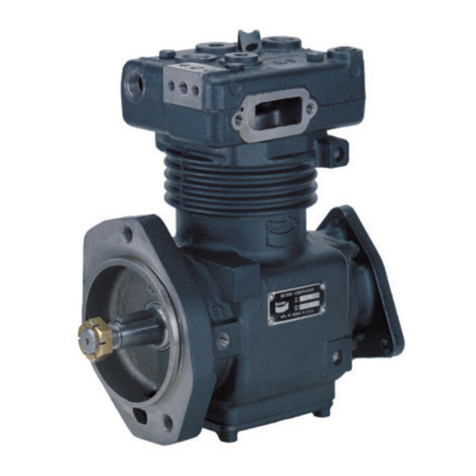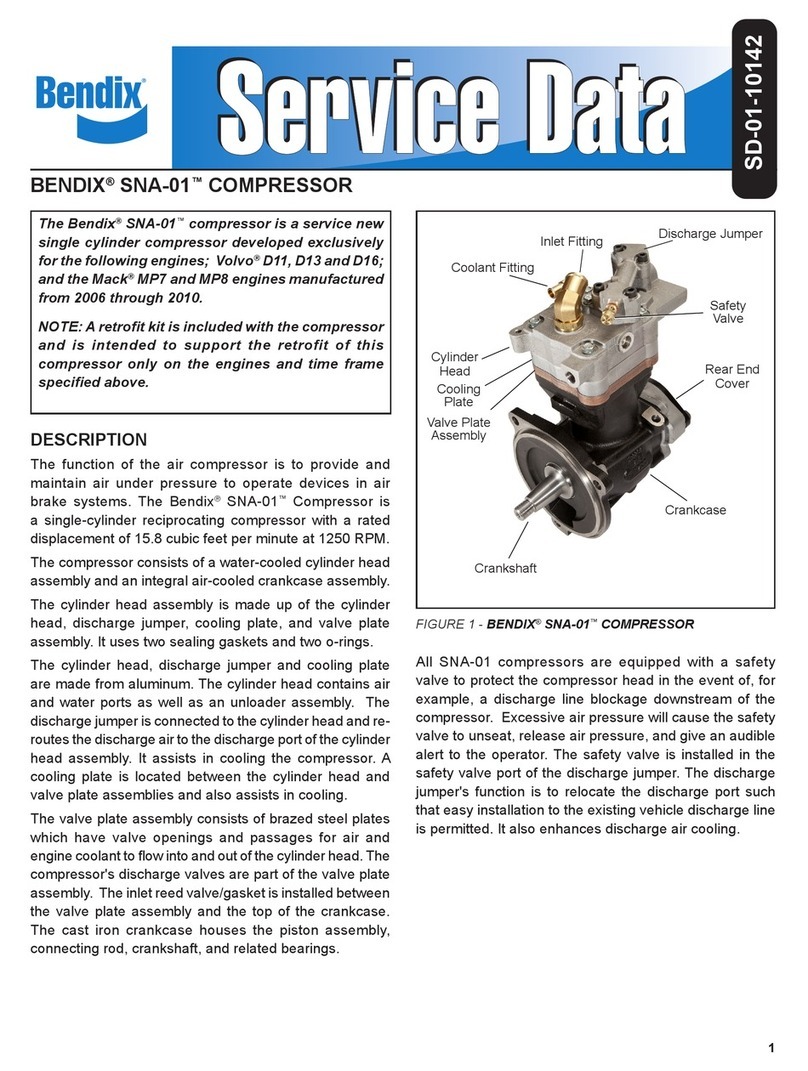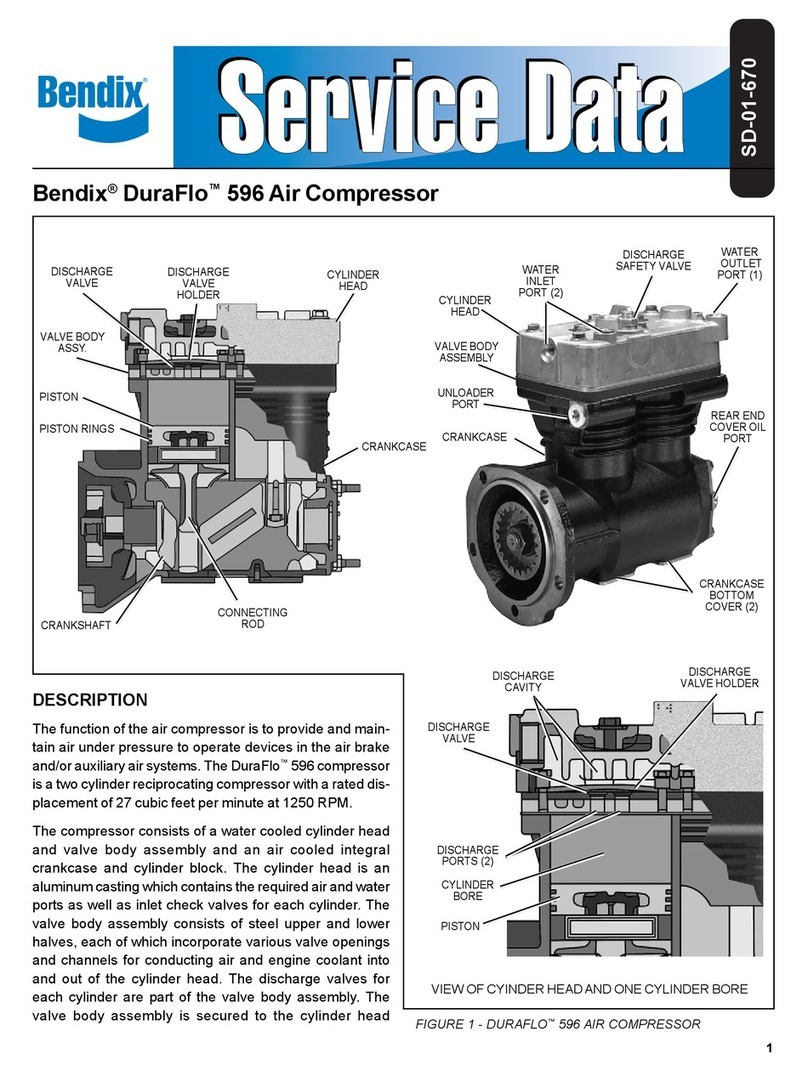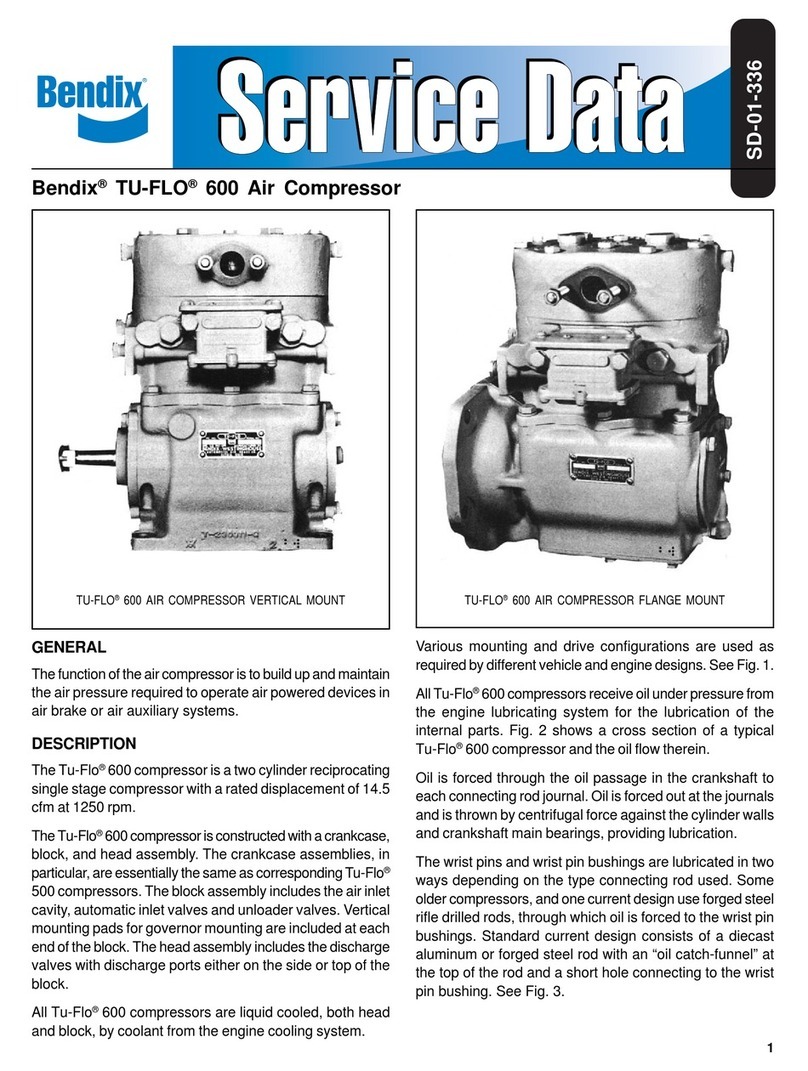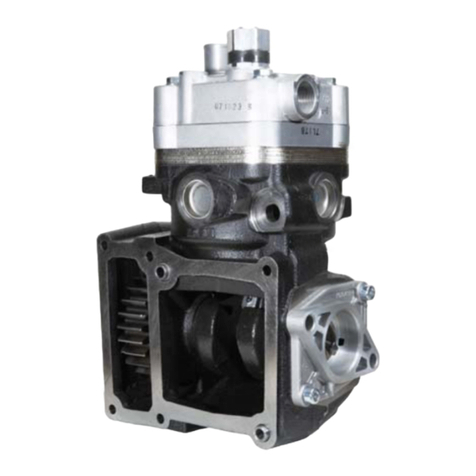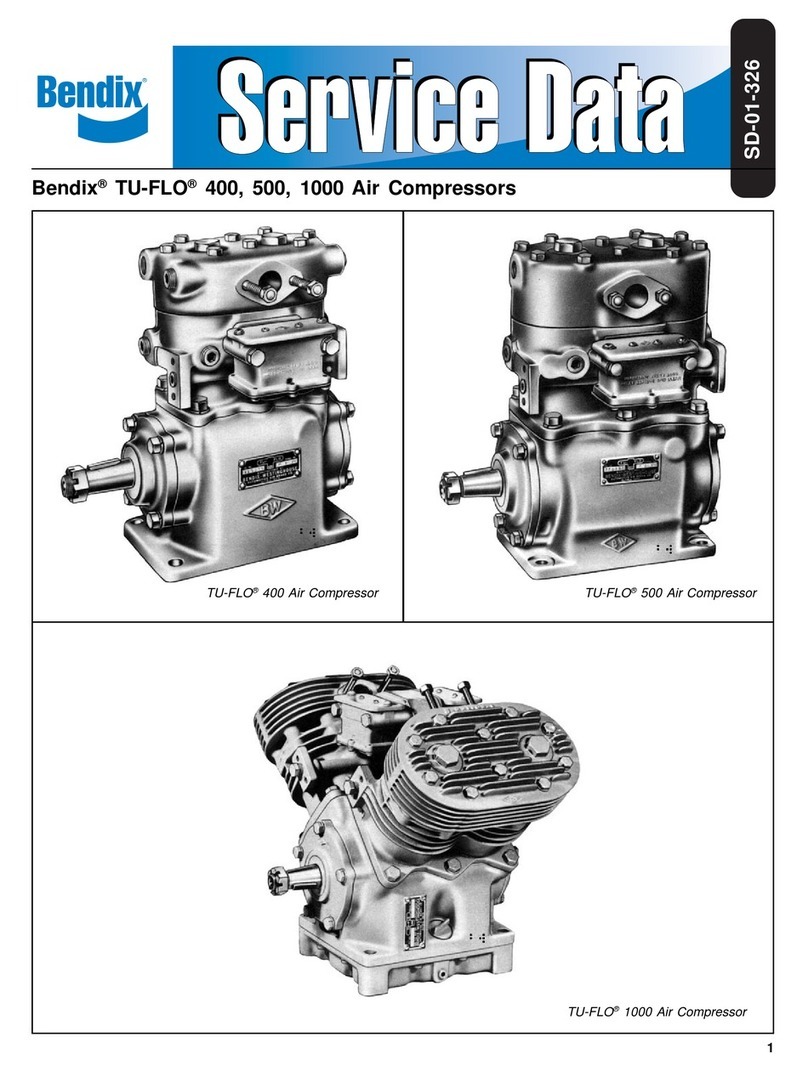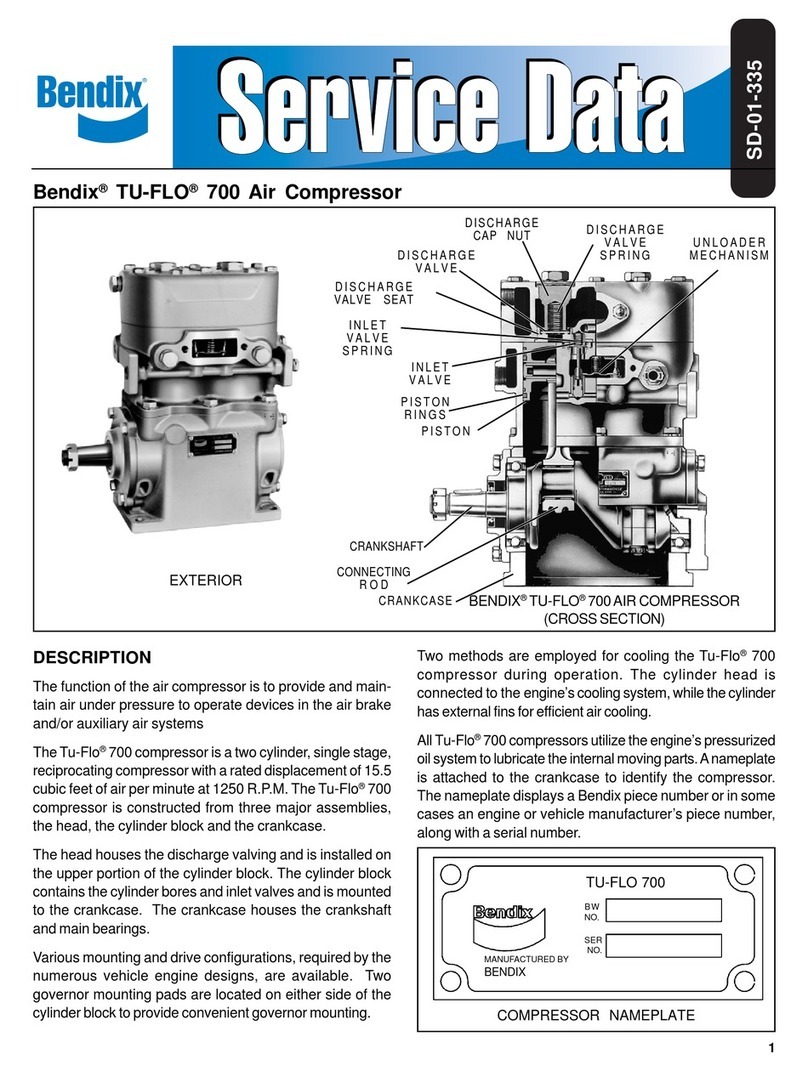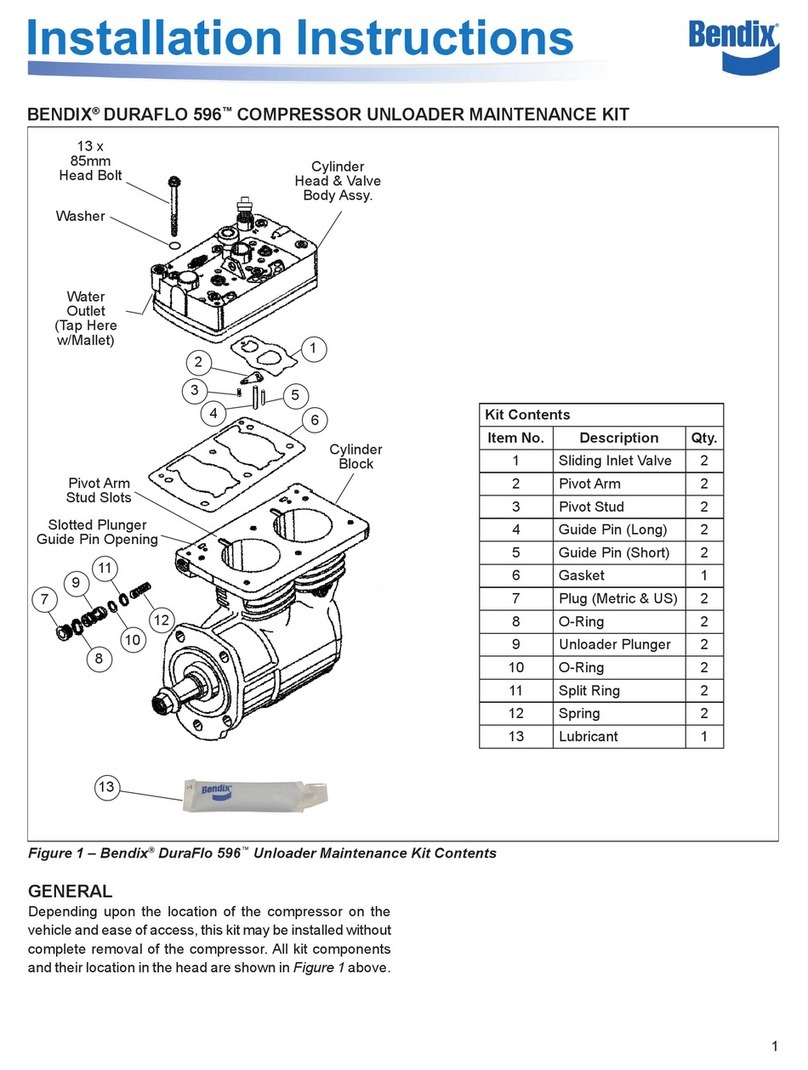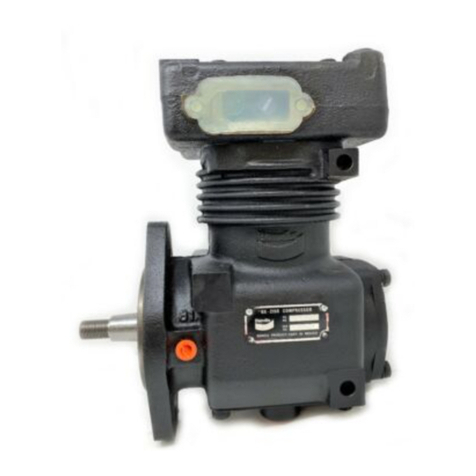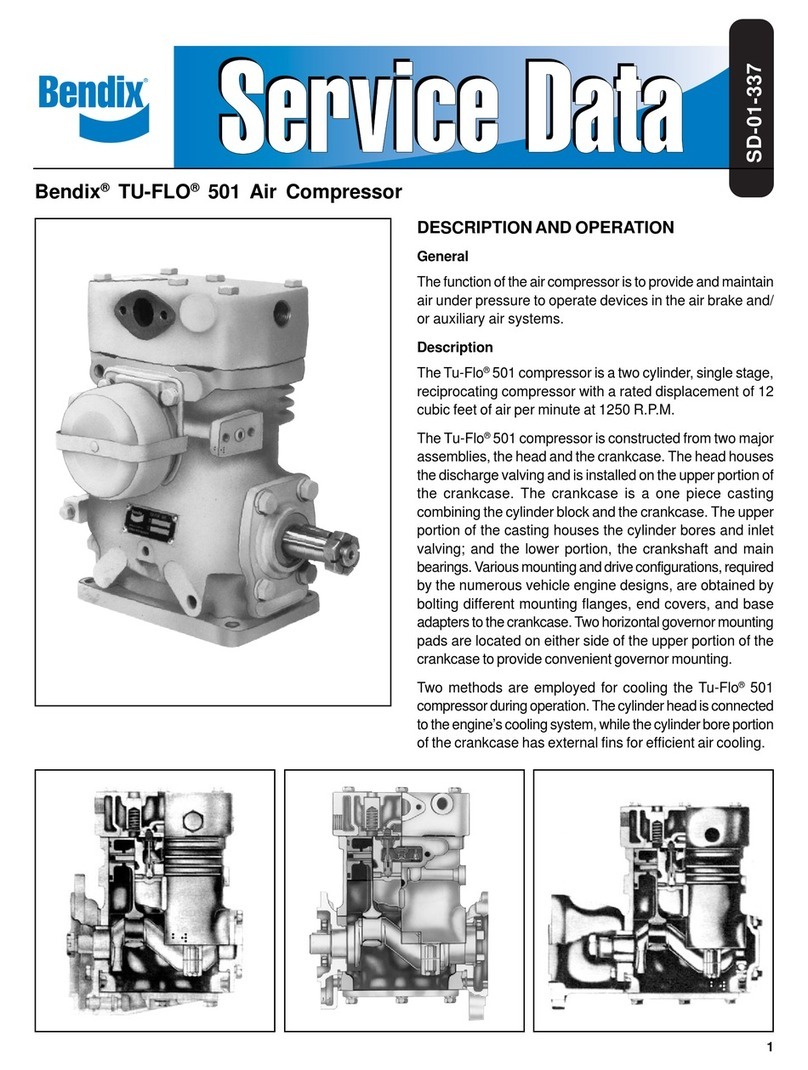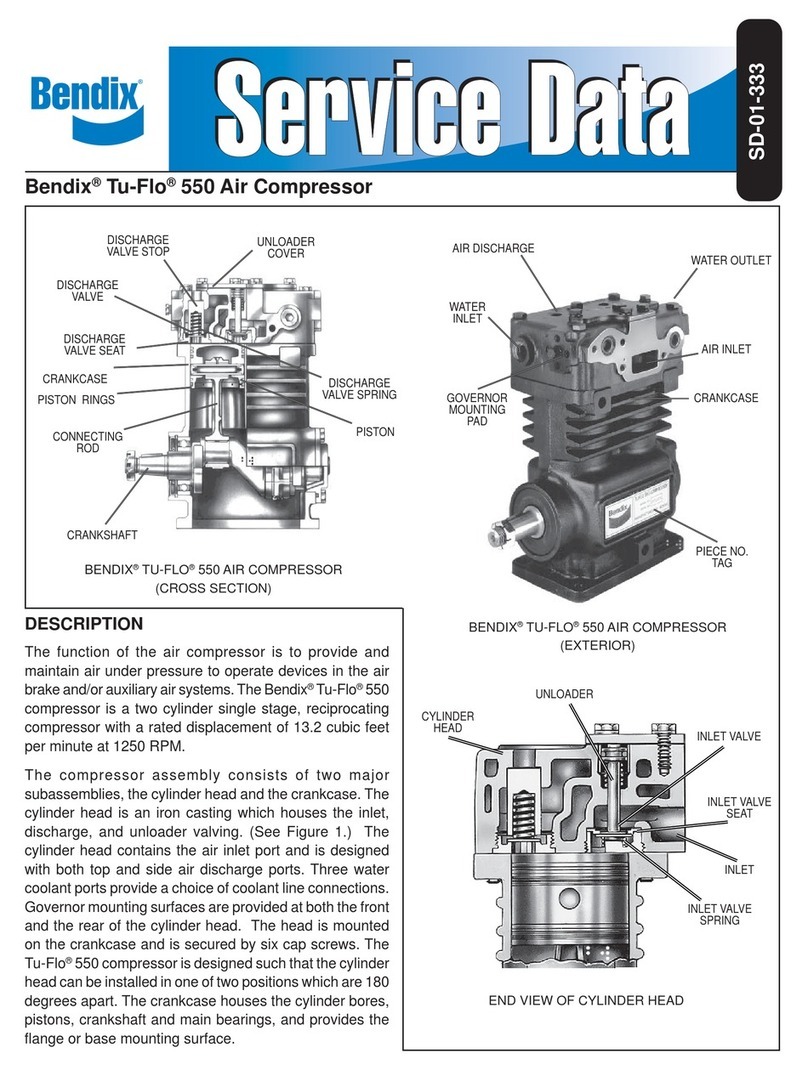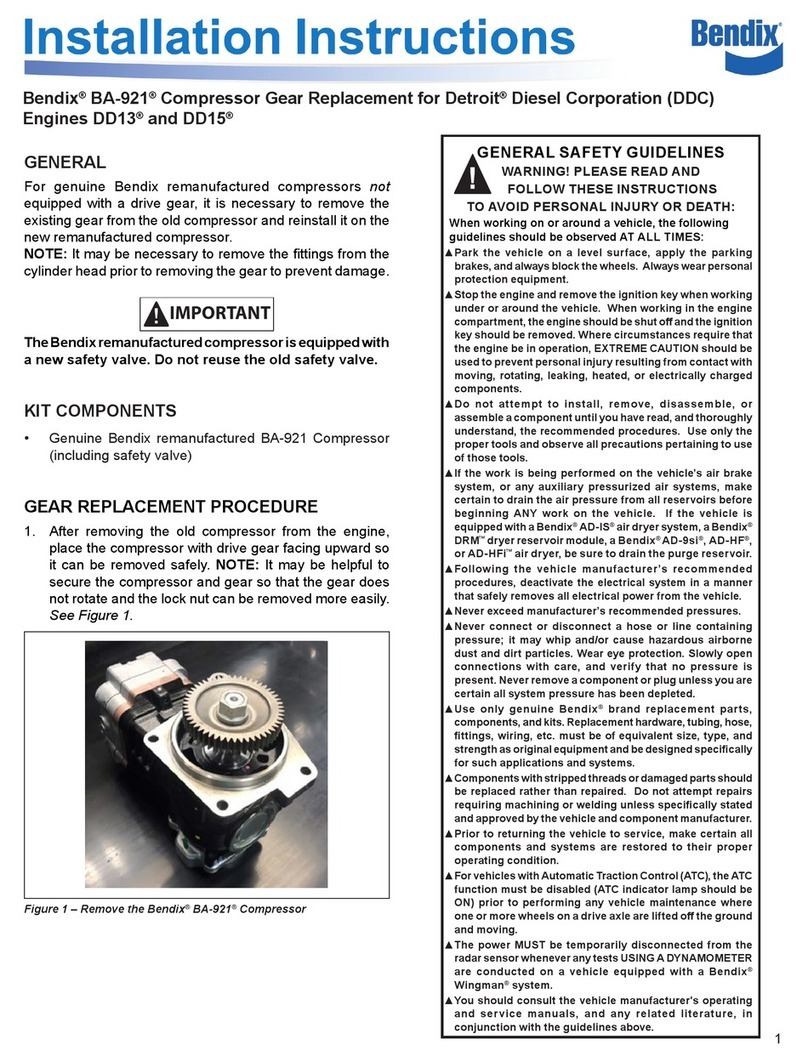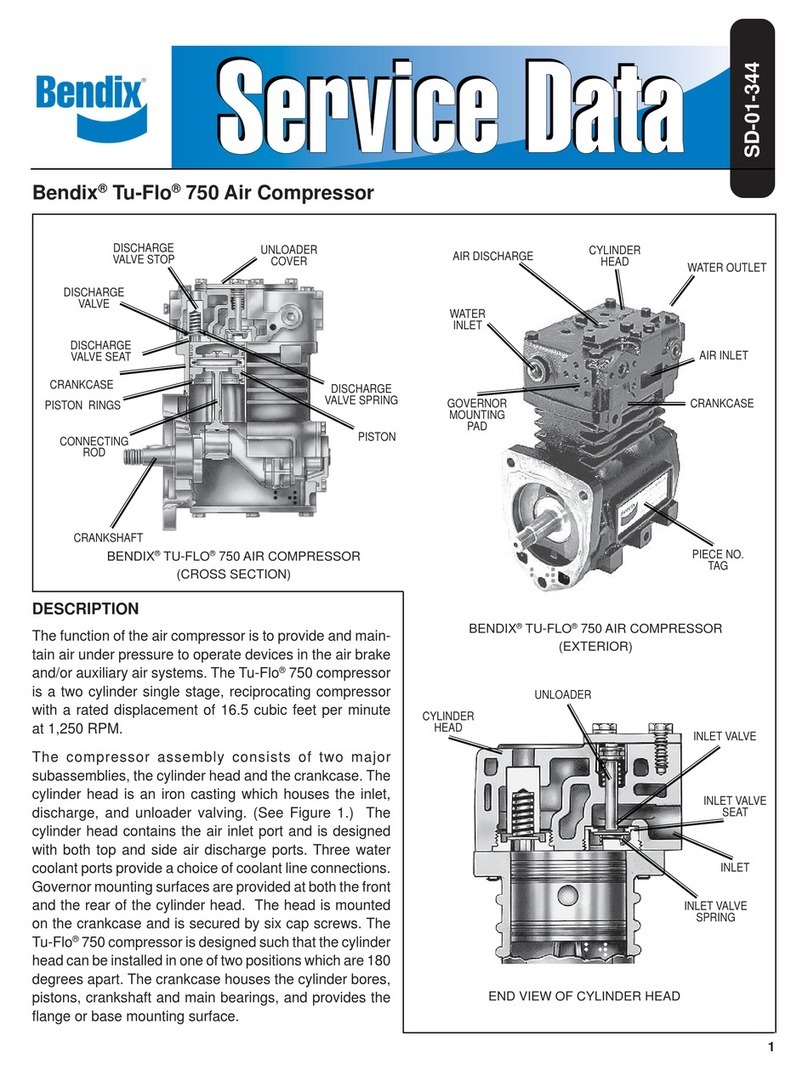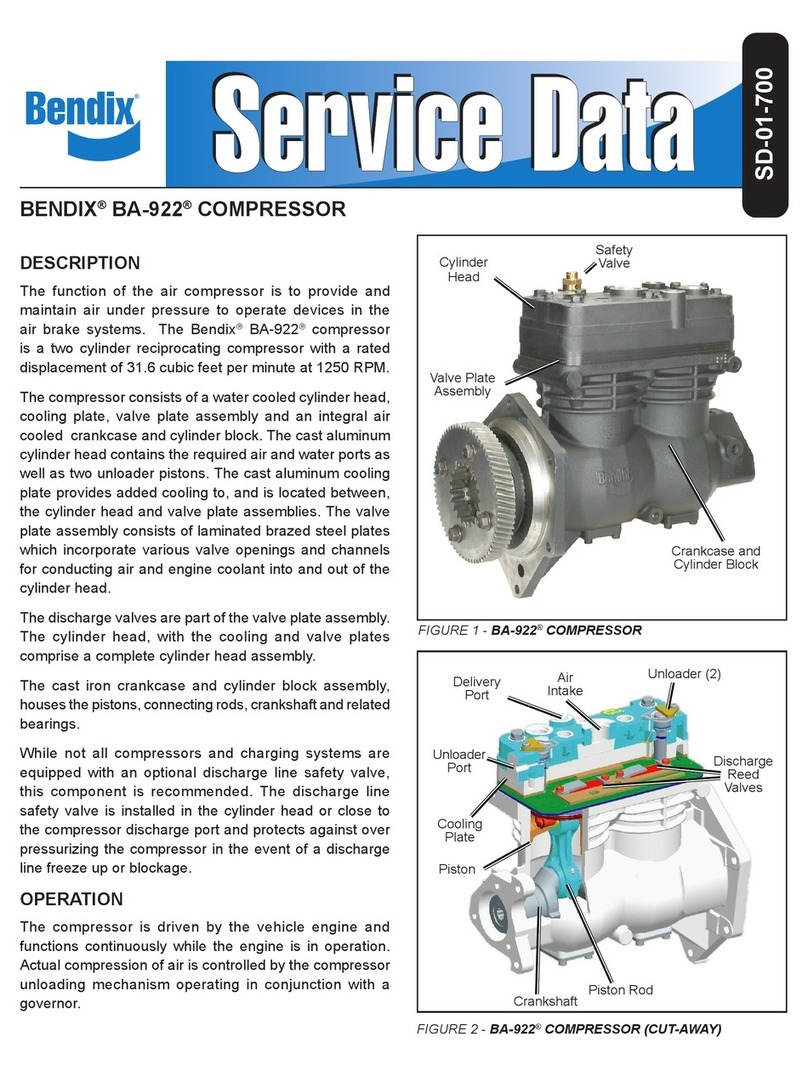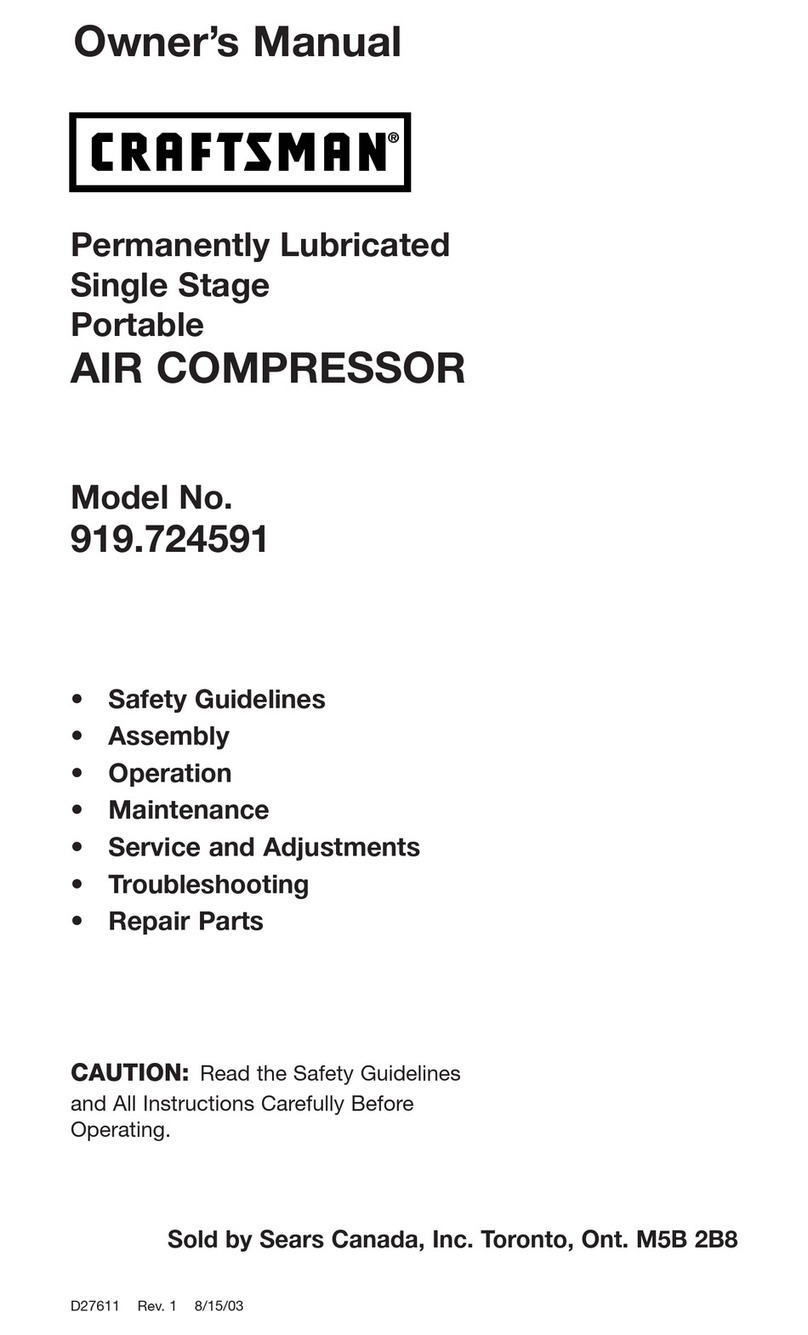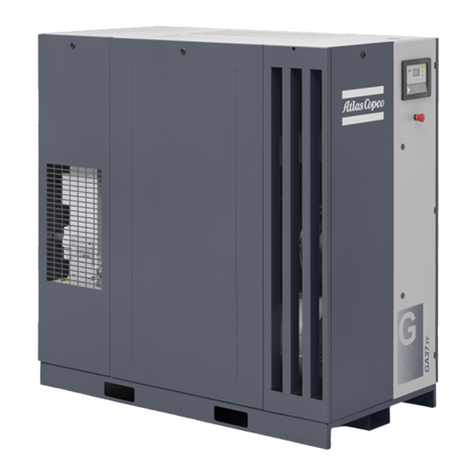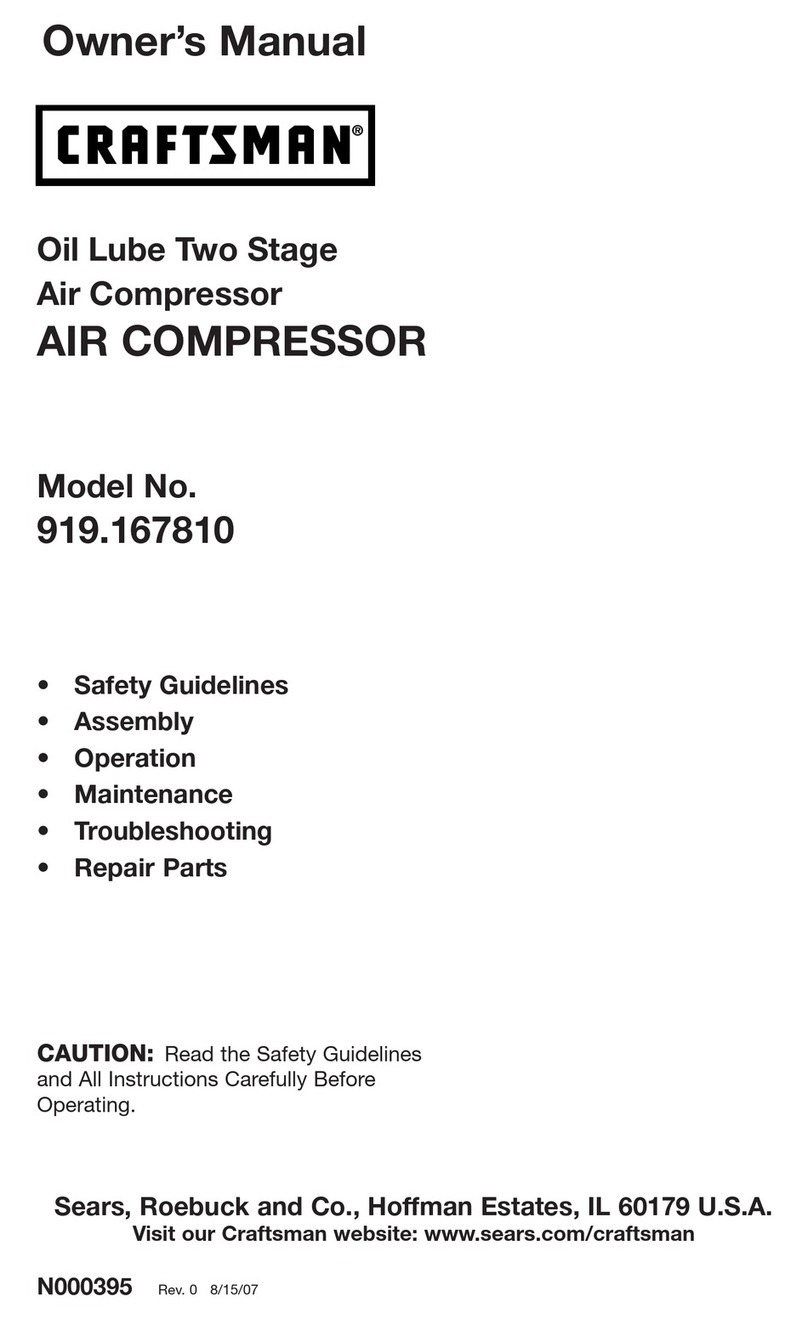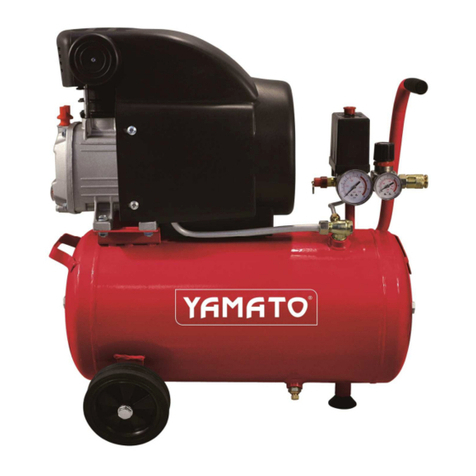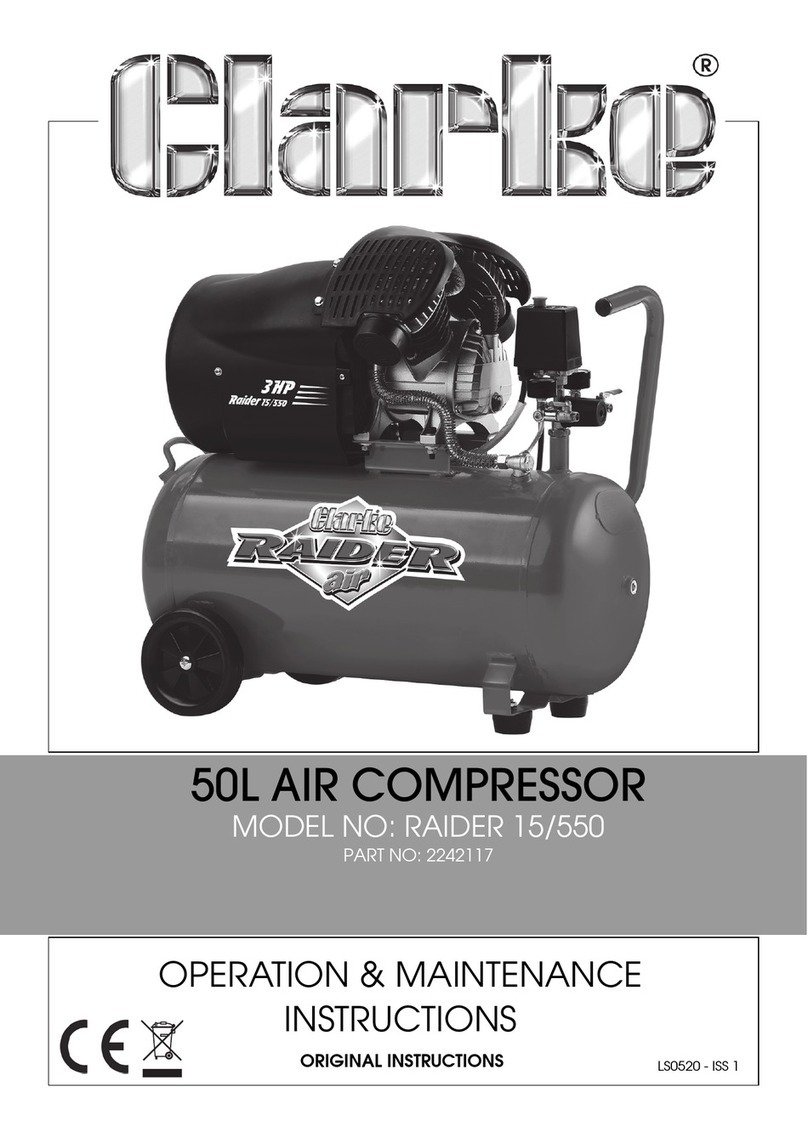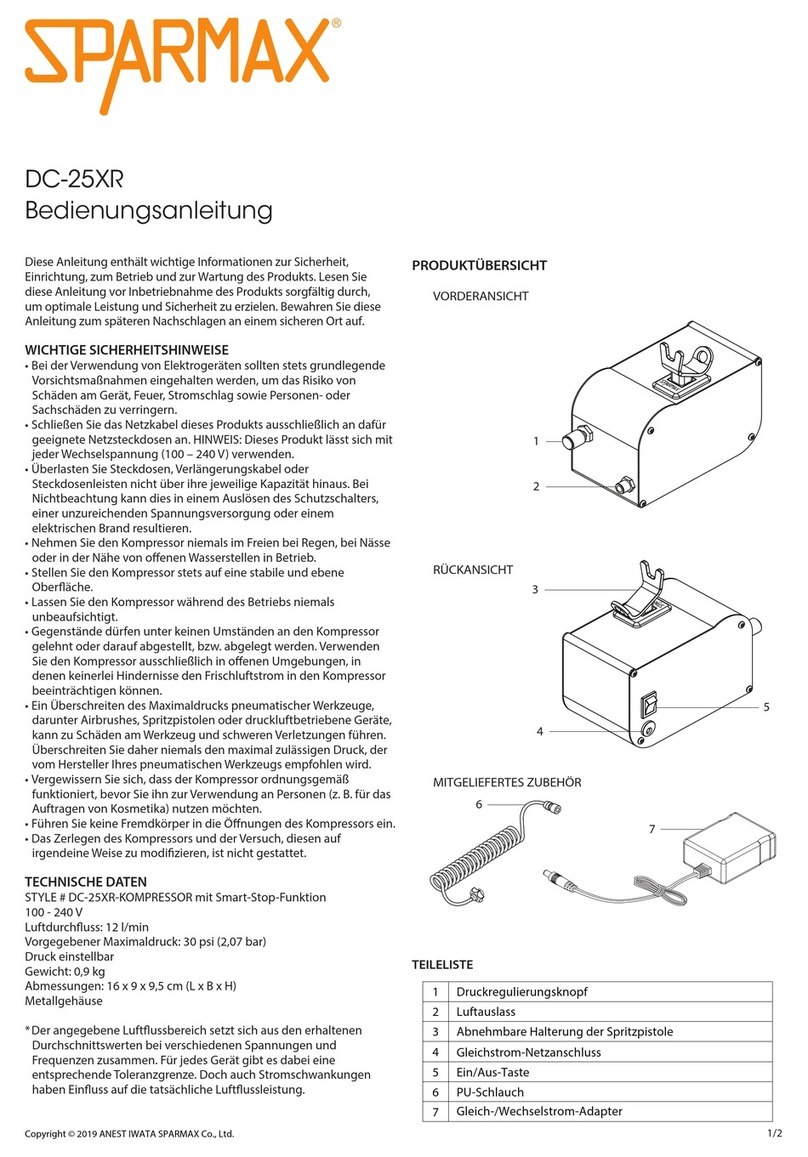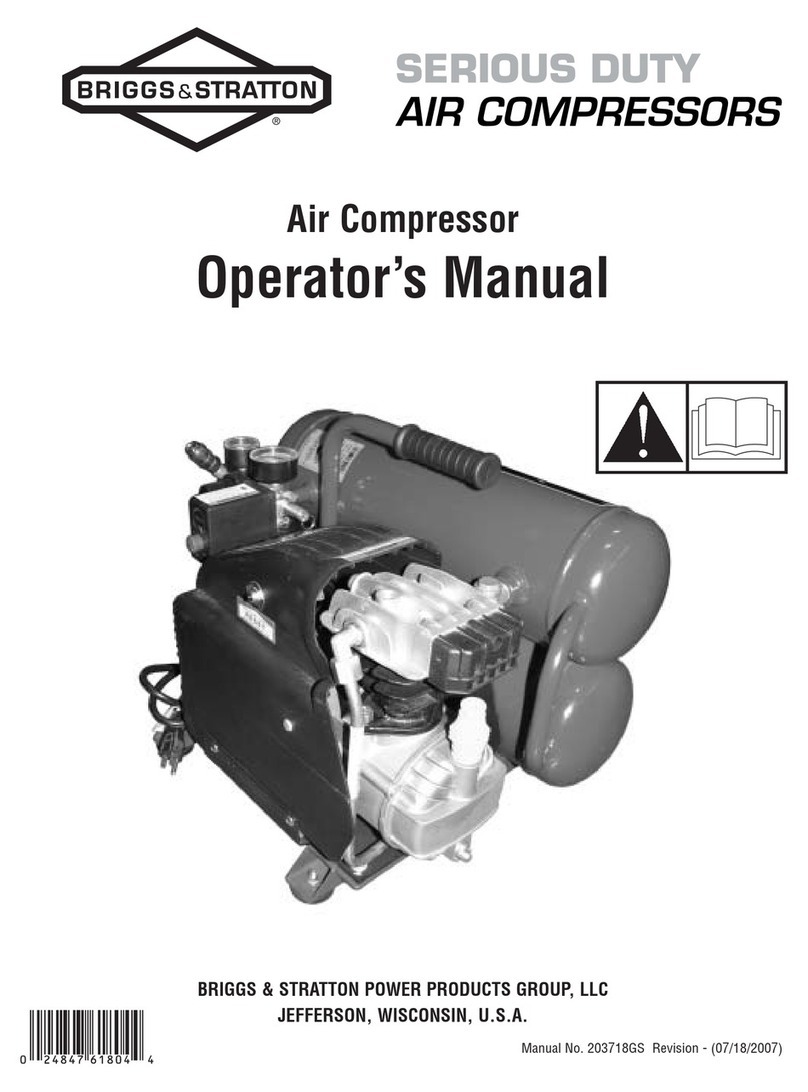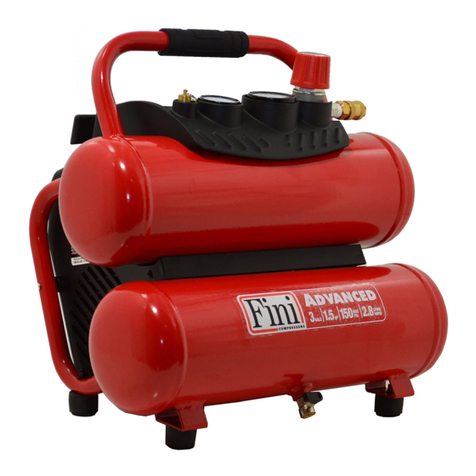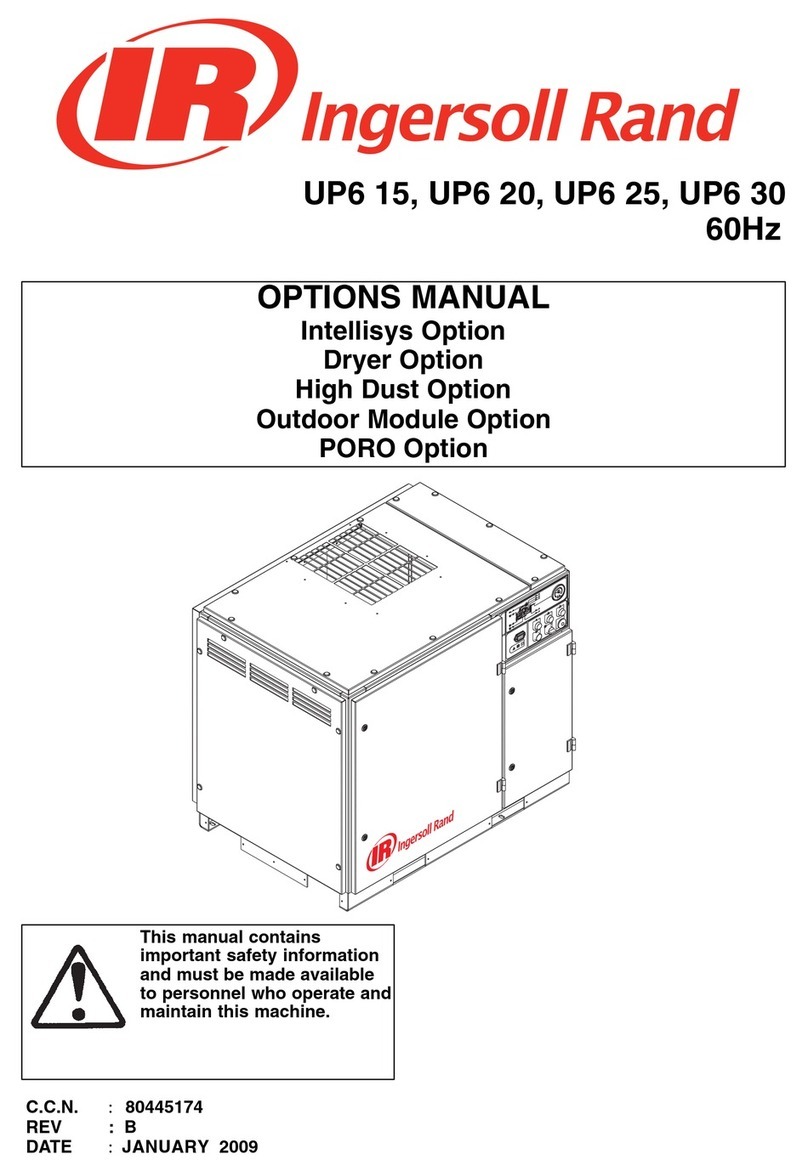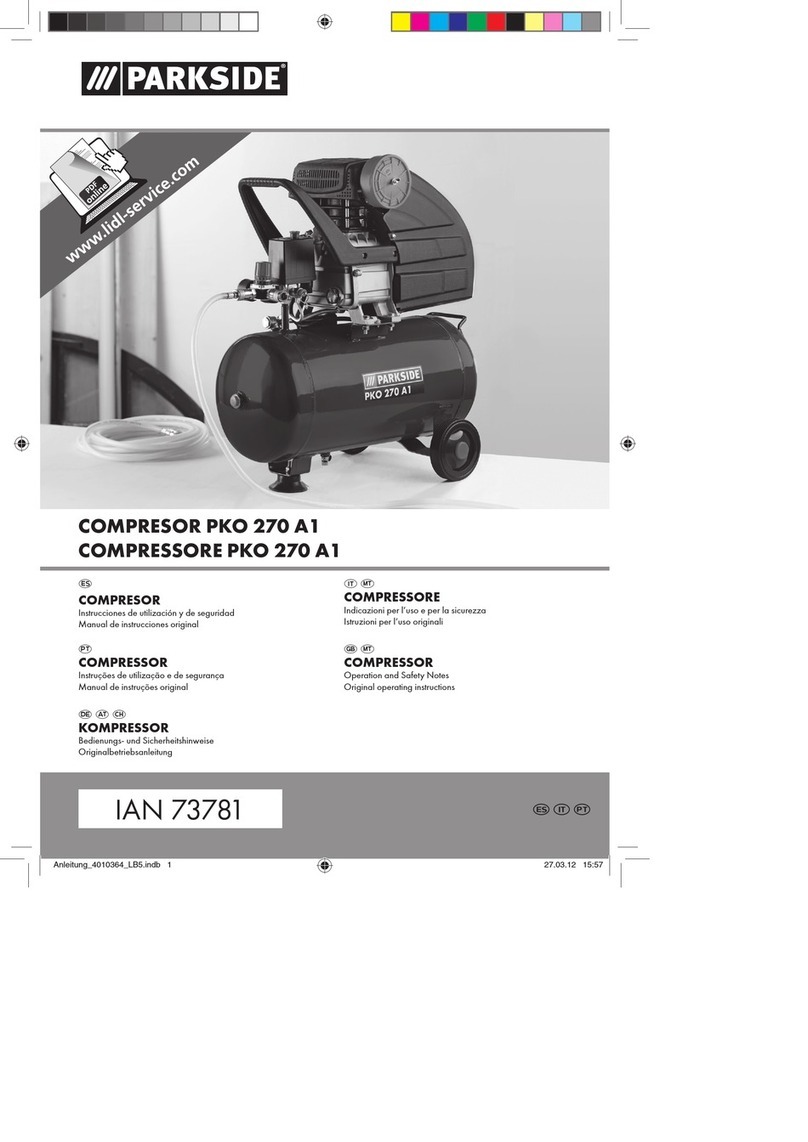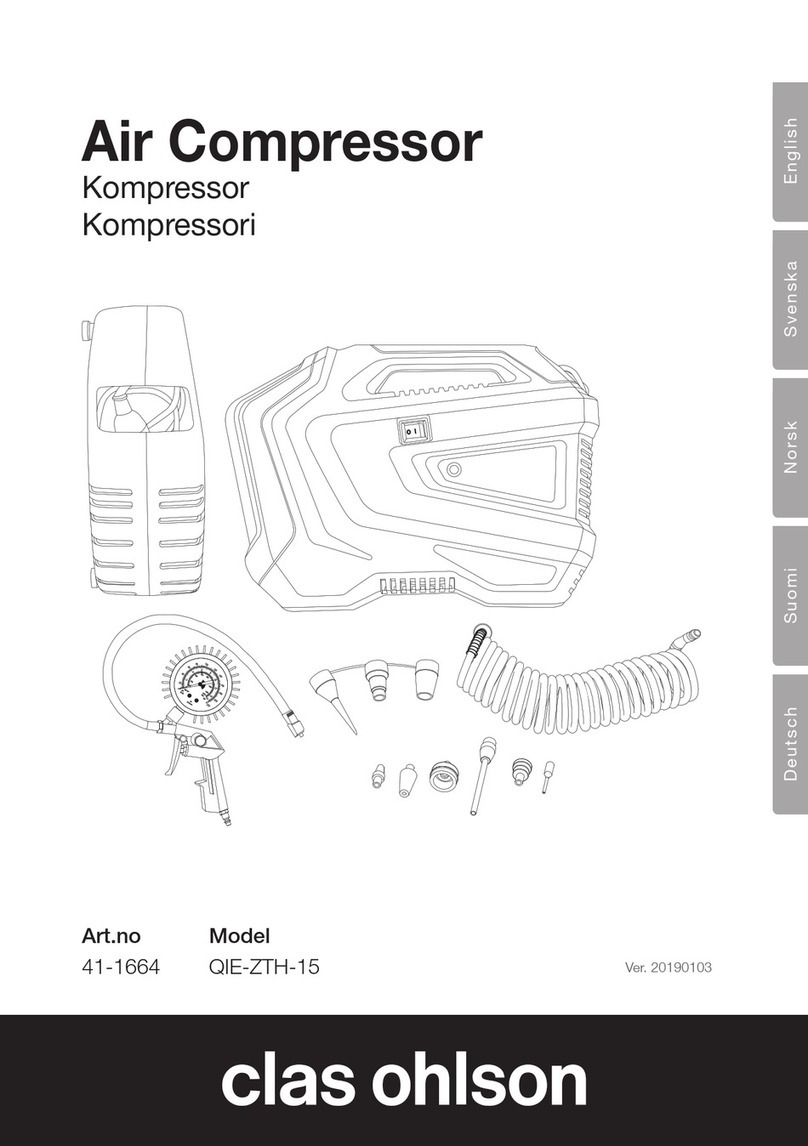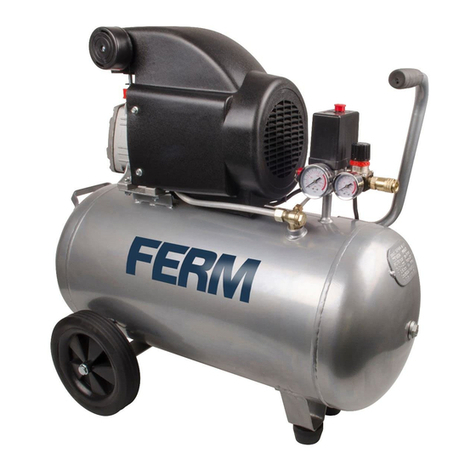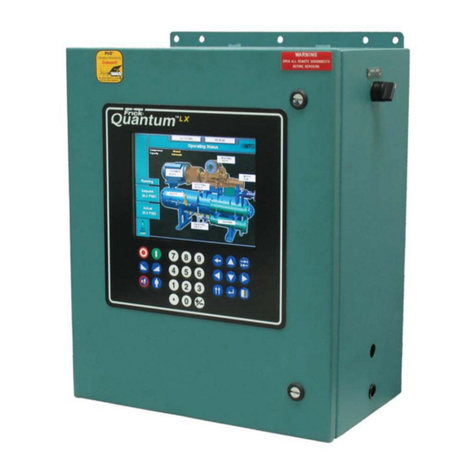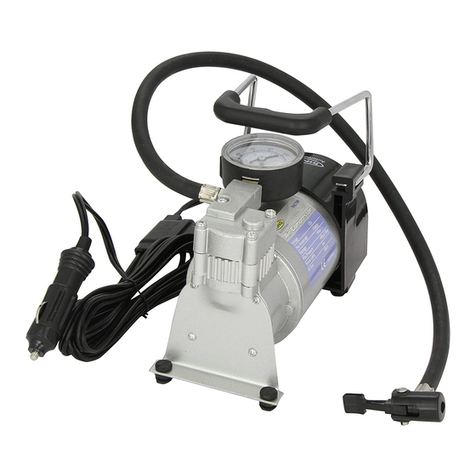
7
DRY ELEMENT - PLEATED PAPER STRAINER
Every two months, 800 operating hours or 20,000 miles
whichever occurs first, loosen the spring clip from the
unhinged side of the mounting baffle and open the cover.
Replacethepleatedpaperfilterandsecurethecleanedcover,
making sure the filter is in position. Be sure to replace the
air strainer gasket if the entire air strainer is removed from
thecompressor intake.
INTAKEADAPTER
When the engine air cleaner is replaced: Some com-
pressorsarefittedwith compressor intake adapters, which
allowthecompressor intake to be connected totheengine
airinductionsystem.Inthis case, the compressor receives
a supply of clean air from the engine air cleaner. When the
engineair filter is changed, the compressor intake adapter
shouldbechecked.Ifitisloose,removetheintakeadapter,
cleanthestrainerplate,if applicable, and replace theintake
adapter gasket, and reinstall the adapter securely. Check
lineconnectionsbothatthe compressor intake adapter and
at the engine. Inspect the connecting line for ruptures and
replace it if necessary.
COMPRESSOR COOLING
Every 6 months, 1,800 operating hours or after each
50,000 miles whichever occurs first, inspect the com-
pressor discharge port, inlet cavity and discharge line for
evidenceofrestrictionsandcarboning.Ifexcessive buildup
isnoted,thoroughlycleanorreplacetheaffectedpartsand
closely inspect the compressor cooling system. Check all
compressor coolant lines for kinks and restrictions to flow.
Minimum coolant line size is 3/8" I.D. Check coolant lines
forinternalclogging from rust scale. If coolant lines appear
suspicious,checkthecoolant flowandcomparetothe tabu-
lated technical data present in the back of this manual.
Carefully inspect the air induction system for restrictions.
LUBRICATION
Everysixmonths, 1,800operatinghours or50,000miles
whichever occurs first, check external oil supply and re-
turn lines, if applicable, for kinks, bends, or restrictions to
flow. Supply lines must be a minimum of 3/16" I.D. and
return lines must be a minimum of 1/2" I.D. Oil return lines
should slope as sharply as possible back to the engine
crankcase and should have as few fittings and bends as
possible. Refer to the tabulated technical data in the back
ofthismanualfor oil pressure minimum values.
Checktheexteriorofthecompressorforthe presence of oil
seepageandrefertothe TROUBLESHOOTING section for
appropriatetestsandcorrectiveaction.
OIL PASSING
All reciprocating compressors currently manufactured will
pass a minimal amount of oil. Air dryers will remove the
majority of oil prior to entrance into the air brake system.
ForparticularlyoilsensitivesystemstheBendix®PuraGuard®
QC™oil coalescing filter can be used in conjunction with a
Bendixairdryer.
If compressor oil passing is suspected, refer to the
TROUBLESHOOTINGsectionandTABLEAforthe symp-
toms and corrective action to be taken. In addition, Bendix
has developed the "Bendix Air System Inspection Cup" or
BASIC test to help substantiate suspected excessive oil
passing. The steps to be followed when using the BASIC
test are presented in APPENDIX A at the end of the
TROUBLESHOOTINGsection.
COMPRESSOR DRIVE
Everysix months,1,800operating hoursor 50,000miles,
whichever occurs first, check for noisy compressor
operation,whichcouldindicateaworndrivegearcoupling,
a loose pulley or excessive internal wear. Adjust and/or
replace as necessary.
If the compressor is belt driven, check for proper belt and
pulley alignment and belt tension. Check all compressor
mountingboltsandretightenevenlyif necessary.Checkfor
leakageandproperunloadermechanism operation. Repair
or replace parts as necessary.
Every 24 months, 7,200 operating hours, or after each
200,000miles,perform athoroughinspection,anddepend-
ing upon the results of this inspection or experience,
disassemble the compressor, clean and inspect all parts
thoroughly, replace all worn or damaged parts using only
genuine Bendix replacements or replace the compressor
withagenuineBendixremanufacturedunit.
GENERAL SERVICE CHECKS
OPERATING TESTS
Vehicles manufactured after the effective date of FMVSS
121,withtheminimumrequiredreservoirvolume,musthave
a compressor capable of raising air system pressure from
85-100 psi in 25 seconds or less. This test is performed
withtheengineoperating at maximum recommended gov-
erned speed. The vehicle manufacturer must certify this
performanceon new vehicles withappropriate allowances
for air systems with greater than the minimum required
reservoirvolume.
